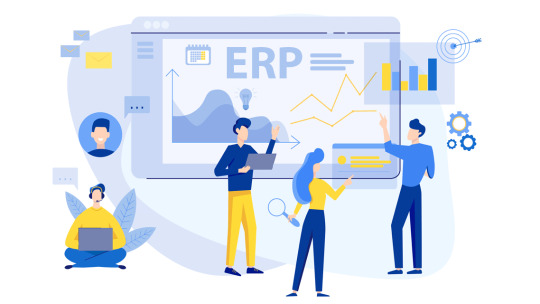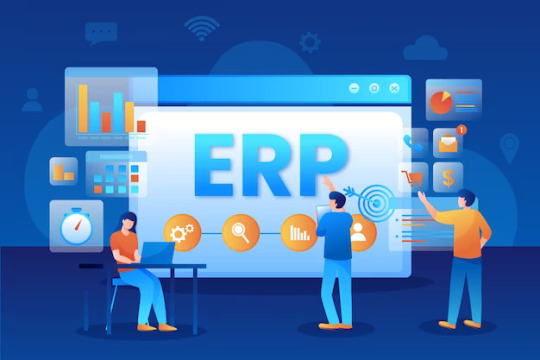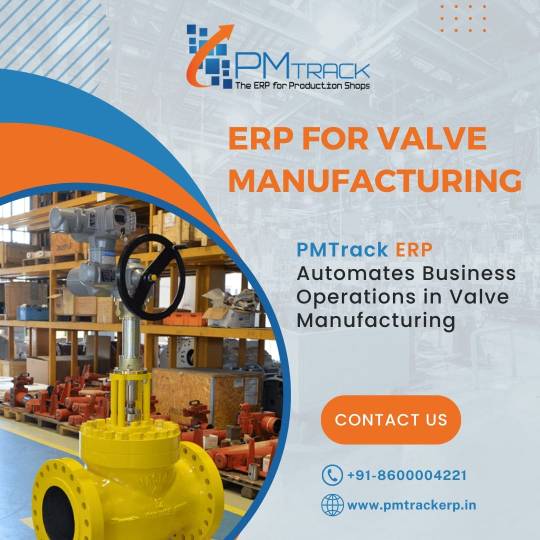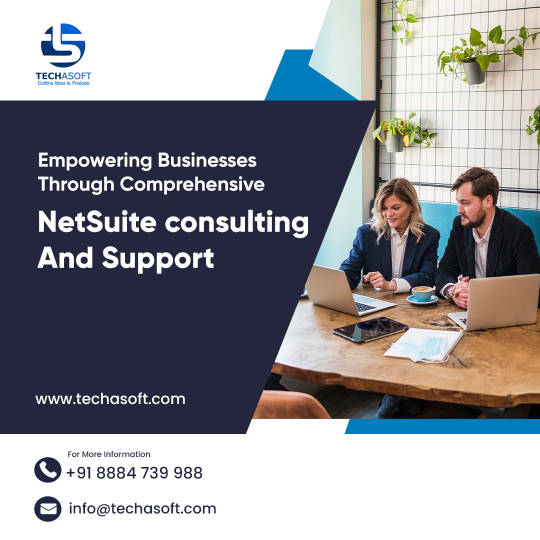#erpcloud
Text
Transform Your Business Dynamics with STERP – Pioneering ERP Solutions for Manufacturing Excellence
Unlock unparalleled efficiency and innovation in your manufacturing processes with STERP (ShantiTechnology), your trusted partner in ERP solutions for manufacturing. Our cutting-edge ERP software for the Manufacturing Industry, ensuring seamless operations, enhanced productivity, and optimal resource utilization. STERP provides ERP for Software Development Company which manages projects, track resources, and enhance collaboration seamlessly. ERP System for Manufacturing Industry covers the entire spectrum – from inventory and financial management to HR processes.
STERP (shantitechnology) brings it all to your fingertips.

#ERP Software for Manufacturing Industry#ERP System for Manufacturing Industry#ERP for Software Development Company#ERP Solutions for Manufacturing#ERPindia#businesssolutions#erpcloud#erp solutions#erp software#business and management#India#Gujarat#Rajkot#Indore#Pune#manufacturer#engineering erp
7 notes
·
View notes
Text
Read this blog to know that "How you can Streamline your business operations with business central"
2 notes
·
View notes
Text
What should I look for in an ERP solution
Everyone says that they have an ERP solution at a wide range of price points. How do I choose one for my SME
Longevity
Check if the ERP solution would meet your requirement 5 years from now when you grow say 5X, add new manufacturing locations, add different lines of business. ERPs not only need to address the growth volume of your business but need to adapt to the business process changes required as you grow.
How easy it is to use
Can your average user learn and adapt easily, this is more relevant for SME organizations trying to embrace ERPs , as they are not in a position to employ specially trained skills for ERP implementation or operations. Your cloud ERP should be intuitive to use and as simple and easy as an e-commerce website. Make sure that the user experience is simple and follows the typical standards of any web application.
A SaaS model helps
A SaaS based ERP allows you to start with very low opex costs and minimal investment. Your opex increases as your business grows and you have a more rational approach towards investment in technology.
What about open source
One major advantage of open source solutions is that there is no license cost to acquire it. Other than that, open source solutions really don't provide any additional benefits to the end customer, most of whom would like to concentrate on their business, rather than trying to change or modify the source code. Secondly since it is open source, support and feature enhancements are driven by the community and the community should be as eager as you to add a feature .
Check the total cost of ownership of open source solutions.
1.Requirement understanding costs
2.License costs
3.Hosting or cloud costs and all the licenses required to run the open source
4.Support costs
5.Cost and reliability of making changes in the solution
The connected EcoSystem
Organizations need to leverage on the connected ecosystem. Does your ERP provide open and easy connectivity to marketplaces, statutory bodies, vendor and customer systems, banks and financial intermediaries. Does it have the capability to provide APIs for easy and quick integration and implementation.
What about AI in ERP?
A number of ERP vendors have started incorporating AI in their ERP solutions, and most of them are Cloud ERP providers. It is impossible to incorporate the infrastructure required for AI on an stand alone ERP system, the costs become prohibitive. Cloud ERPs can build AI capabilities leveraging the cloud infrastructure and share the same infrastructure with all the users.
There are already a number of use cases where AI can be used in an ERP, for instance read unstructured documents / emails using AI and convert them to Sales orders, Expenses, GRN in the ERP. Flag transactions which seem irregular by nature, detect fraud or suspicious transaction, increase planning accuracy using AI, continuous auditing, realtime evaluation of your business partners and Ai driven business analytics and Insights
To conclude
Though most ERP vendors will try and match your requirement document either "out of the box" or by so called "minor" customisation, you need to look beyond the current requirements and ensure that your ERP vendor has a track record of adapting and leveraging trends in technology so that you will be able to stay ahead in the future.
Visit Our Site To Know More :-https://proteustech.in/
#erp#erpcloud#erp software#cloud erp#saas#erpdevelopment#ERP software#software services#proteusvision#vision AI#Vision ERP#ERPsolution#cloud computing#sap erp#cloud accounting#cloud solutions#cloud nonsense#VisionCRM
2 notes
·
View notes
Text
Building an ERP System: A Comprehensive Step-by-Step Guide

#application#development#software#software development#erpcloud#erp implementation#erp software#erp consultant#sap erp
2 notes
·
View notes
Text
How to Discover the ROI of ERP Implementation Projects?
Determining the return on investment (ROI) of an enterprise resource planning (ERP) system involves a process of analyzing the expected benefits against the costs of implementing and operating the system.

How to Calculate ROI of ERP Project?
Calculating the return on investment (ROI) for an enterprise resource planning (ERP) system involves comparing the expected benefits of the ERP implementation against its total cost.
Here are the steps to calculate ERP ROI:
Determine the total cost of the ERP implementation, including software licenses, hardware, consulting fees, employee training costs, and any other associated expenses.
Identify the expected benefits of the ERP implementation, such as increased efficiency, improved decision-making capabilities, reduced costs, increased productivity, and improved customer satisfaction.
Assign a monetary value to each expected benefit. For example, if the expected benefit is increased efficiency, calculate the potential cost savings associated with reducing manual efforts and eliminating duplicate data entry.
Estimate the time it will take to achieve each benefit and calculate the annual benefit for each benefit category.
Calculate the total expected annual benefit by adding up the annual benefits for each benefit category.
Subtract the total cost of the ERP implementation from the total expected annual benefit to get the total net benefit.
Divide the total net benefit by the total cost of the ERP implementation and multiply the result by 100 to get the ERP ROI percentage.
For example, if the total cost of the ERP implementation is $500,000 and the total expected annual benefit is $750,000, the total net benefit would be $250,000 ($750,000 - $500,000). The ERP ROI would be 50% ($250,000/$500,000 x 100). This means that for every dollar invested in the ERP system, the organization can expect to receive a return of 50 cents. It is important to note that the ROI calculation should take into account both short-term and long-term benefits and costs to get a comprehensive view of the ROI.
Determine the ROI of an ERP system
Here are the steps to determine the ROI of an ERP system:
Define the goals of the ERP system: Start by defining the goals of the ERP system, such as reducing operating costs, improving productivity, or enhancing customer service.
Identify the costs of the ERP system: Determine the total cost of the ERP system, including software licensing, hardware, consulting fees, employee training, and any other associated expenses.
Quantify the benefits of the ERP system: Identify the potential benefits of the ERP system, such as reduced operating costs, improved productivity, and increased revenue. Assign a monetary value to each benefit based on the potential financial impact on the organization.
Estimate the time to achieve benefits: Determine the time it will take to achieve each benefit and calculate the annual benefit for each benefit category.
Calculate the total expected annual benefit: Add up the annual benefits for each benefit category to get the total expected annual benefit.
Calculate the net present value (NPV) of the ERP system: Calculate the present value of the expected benefits minus the present value of the expected costs, using a discounted cash flow (DCF) analysis.
Calculate the ROI: Divide the NPV by the total cost of the ERP system and multiply by 100 to get the ROI percentage.
Conclusion:
ERP implementation can help you in many ways but without the calculation of Return on investment then you spend is totally lost. So make sure you have a good volume of return before investing in the ERP implementation. If you are planning to ERP implementation definitely you will conclude with the best oracle ERP cloud implementation, choose the service who has a year of expertise in oracle ERP implementation and the relevant field.
#erp implementation#erpcloud#erp software#erp implementation service#best erp implementation service#oraclecloudinfrastructure#oraclecloud#oracle implementation#erp modules#ERP software implementation
2 notes
·
View notes
Text
Say goodbye to manual accounting hassles! 🚀
Elevate your small business with OlivoTech's ERP Cloud solutions. 🌐 Transform outdated accounting software into a streamlined powerhouse, automating tasks and unlocking real-time insights. 📊 Boost efficiency, reduce errors, and gain full control over your finances. OlivoERP understands the unique needs of small businesses, offering affordable, industry-specific ERP solutions tailored to fuel your growth. 💼
Ready to ditch the accounting blues and embrace success? Take the first step with ERP Cloud – where automation meets growth. 💻📈
Read the blog to discover how ERP Cloud can automate and fuel your growth: Modify Business Accounting Software: Automate & Grow with ERP (olivotech.com)
1 note
·
View note
Text

#ERPforValveManufacturing#erpsoftware#erpsoftwaresolutions#erpsolution#erpformanufacturers#ValveManufacturing#Valvemanufacturingprocess#erpcloud#erpsoftwarecompany#valvemanufacturingcompanies#ERPmanufacturingcompanies
0 notes
Photo

✔️ NETSUITE SUPPORT SERVICES ✔️
Empowering Businesses Through Comprehensive NetSuite consulting And Support
NetSuite Support Services refer to the range of services provided by Oracle NetSuite to assist users and customers with their NetSuite software implementation, maintenance, and troubleshooting needs. NetSuite is a cloud-based enterprise resource planning (ERP) and customer relationship management (CRM) solution that helps businesses manage their financials, operations, customer interactions, and more.
For NetSuite Solutions Specialists -
Visit Us 🌐 - https://bit.ly/41DVjyS
Call Us 📞 - +91 8884 739 988
#digitaltransformation#software#netsuiteimplementation#netsuitesolutionprovider#netsuitepartner#cloud#netsuite#erp#clouderp#oraclenetsuite#technology#oracle#erpcloud#techasoft#netsuiteerp#netsuiteconsultant#netsuite services#netsuitedevelopers#netsuitecompany
0 notes
Text
Our daily activities show that both local and cloud storage have their uses. What distinguishes cloud storage from local storage, and how can you determine which is the best option for your requirements?
#cloud#cloudstorage#erpcloud#erpsolution#tranquil#erpsoftware#erp#localstorage#cloudstoragevslocalstorage#gcc
0 notes
Text
STREAMLINE YOUR BUDGET PROCESS WITH BUSINESS CENTRAL | EFFECTIVE FINANCIAL MANAGEMENT
The budget process is a critical aspect of managing any business, as it helps in planning sales, operational activities, resource allocation, and cost control. Business Central, a comprehensive business management solution, can significantly streamline this process, making it more efficient and accurate.
To Know More : https://www.infoc.com/streamline-your-budget-process-with-business-central-effective-financial-management/

1 note
·
View note
Text
Choosing the Right Sap S/4hana Migration Approach: Greenfield Vs. Brownfield Strategies
SAP S/4HANA is a game-changing technology that revolutionizes business operations by replacing intricate legacy workflows with rapid operational insights through in-memory computing. For companies aiming to modernize their SAP landscape and gain a competitive advantage, migrating from SAP ERP Central Component to SAP S/4HANA is crucial.
Selecting the right migration approach is vital to ensure a seamless transition. There are two options available: upgrading the existing system to a new version and migrating data, or leveraging the expertise of a third-party service provider for migrating from the current version. Embracing SAP S/4HANA expedites digital transformation and boosts operational performance.
Migration strategies for SAP S/4HANA- Greenfield vs. Brownfield
Migrating to SAP S/4HANA is a complex process that demands a well-defined approach and methodology. With its capability to handle structured and unstructured data types, SAP HANA empowers businesses to store and retrieve data from diverse sources like middleware systems and enterprise applications. Achieving success in this migration requires meticulous planning, thorough preparation, and flawless execution. There are several migration options available, but the two most widely used approaches for transitioning to SAP S/4HANA are:
Read Continue
1 note
·
View note
Link

#erp#erpcloud#erp implementation#erp system#erp solutions#erp software#erp for trading#trading erp software#software
1 note
·
View note
Text
2 notes
·
View notes
Text
ERP Software Development Company 3sitservices
We are an ERP software development company that offers the best ERP software system. Our well-experienced team of experts provides the best solutions for your business enterprise. Contact us - 9319436476

#application#development#software#software development#mobile app development#mobile application development#erp software#erp#erp integration#erp consulting services#erpcloud#saas#payroll#marketing#salesforce#cloud computing
0 notes
Video
Concord ERP Management Software
Complete Hr Solution that manages all aspects of Human Resources
Call Us Now: 090091 55444
Visit: http://techwaveitsolutions.com/
http://concorderp.com/
.
.
.
#humanresources#humanresourcesmanagement#humanresourceshelp#HumanResourcesSpecialist#hrmanagementsoftware#erpsoftware#softwaredevelopment#hrsolution#hrsoftware#erpsolution#erpsystem#software#technology#ERPCloud#v#ERPModules#erp#erpdevelopment#customsoftwaredevelopment#techwave#techwaveitsolutions#consultingcompany#indore
0 notes
Text
Role & Benefits of ERP in Supply Chain Management

Early ERP systems were largely focused on financial management and accounting, but over time they evolved to encompass a wider range of business processes, including supply chain management.
Today, ERP systems are integrated platforms that provide a single source of truth for all core business processes, from finance and accounting to procurement and logistics.
In the context of supply chain management, ERP has proved to be a game-changer. By providing real-time visibility, improving efficiency, enabling demand forecasting, and enhancing collaboration, ERP helps manufacturers to optimize their supply chain operations, reduce costs, and improve customer satisfaction.
The rise of cloud-based ERP solutions has only accelerated the adoption of ERP in supply chain management, making it more accessible and affordable for businesses of all sizes.
Overall, ERP has played a critical role in the evolution of supply chain management, helping manufacturers to meet the ever-increasing demands of today’s global marketplace.
What Is ERP in Supply Chain Management?
ERP (Enterprise Resource Planning) in supply chain management refers to the integration of various business processes, such as inventory management, procurement, production planning, and logistics, into a single system.
ERP enables businesses to manage their supply chain operations more efficiently, by providing real-time visibility into inventory levels, production schedules, and delivery status.
ERP systems in supply chain management can help businesses to reduce costs, improve customer service, and increase operational efficiency. They can also provide insights into performance metrics, such as lead times, cycle times, and order accuracy, which can be used to identify areas for improvement.
Tips to improve Supply Chain Operations By using ERP Solutions
What is the Role of ERP in Supply Chain Management?
ERP provides real-time data on inventory levels, production schedules, and customer orders, enabling manufacturers to make informed decisions about production, logistics, and inventory management. This real-time visibility also helps manufacturers to identify and respond to potential disruptions in the supply chain, such as delays in raw material delivery or unexpected changes in demand.
Another key benefit of ERP in supply chain management is improved efficiency. By automating and streamlining key processes such as order management, production planning, and logistics, ERP helps manufacturers to reduce lead times, minimize waste, and optimize resource utilization. This, in turn, leads to lower costs, higher productivity, and improved customer satisfaction.
ERP also plays a critical role in demand forecasting. By analyzing historical data and market trends, ERP helps manufacturers to predict future demand for their products, enabling them to plan production and inventory levels accordingly. This helps manufacturers to avoid stockouts, reduce excess inventory, and optimize their supply chain operations.
Finally, ERP helps manufacturers to enhance collaboration and communication with their suppliers and customers. By providing a centralized platform for communication and data sharing, ERP enables manufacturers to work more closely with their suppliers and customers, improving visibility and transparency across the supply chain.
ERP is a critical tool for manufacturers looking to optimize their supply chain operations. By providing real-time visibility, improving efficiency, enabling demand forecasting, and enhancing collaboration, ERP helps manufacturers to reduce costs, improve productivity, and enhance customer satisfaction.
Benefits of ERP in Supply Chain Management
1. Improved Visibility: ERP provides real-time data and analytics, enabling better visibility into the supply chain.
2. Enhanced Efficiency: By automating routine tasks and streamlining processes, ERP reduces manual errors and improves efficiency.
3. Inventory Optimization: With accurate data on inventory levels and demand, ERP helps manufacturers optimize their inventory and reduce costs.
4. Enhanced collaboration: ERP enables businesses to collaborate with suppliers and customers, ensuring timely delivery of materials and products.
How does ERP Help Manufacturers with SCM?
Enterprise Resource Planning (ERP) systems are a powerful tool for manufacturers looking to streamline their supply chain management (SCM) processes. By providing a centralized platform for managing all aspects of the supply chain, ERP helps manufacturers improve efficiency, reduce costs, and enhance collaboration with suppliers and customers. Here are some ways in which ERP helps manufacturers with SCM:
1. Enhanced Supply Chain Visibility:
ERP systems provide real-time data and analytics, enabling manufacturers to track inventory levels, monitor production schedules, and optimize logistics. This helps manufacturers make informed decisions and respond quickly to changes in demand, supply, or market conditions.
2. Improved Inventory Management:
With ERP, manufacturers can track inventory levels and movements across multiple locations, suppliers, and customers. This helps them avoid stockouts, reduce excess inventory, and optimize warehouse space and labor.
3. Efficient Procurement:
ERP systems automate the procurement process, from requisition to purchase order to invoice payment. This helps manufacturers reduce manual errors, improve supplier compliance, and negotiate better terms and prices.
4. Optimized Production Planning:
ERP systems help manufacturers plan and schedule production based on demand forecasts, resource availability, and capacity constraints. This helps them optimize production efficiency, reduce lead times, and minimize production costs.
5. Streamlined Logistics:
ERP systems help manufacturers manage transportation, shipping, and delivery processes, from route planning to freight billing. This helps manufacturers improve delivery times, reduce transportation costs, and enhance customer satisfaction.
6. Improved Collaboration:
ERP systems enable manufacturers to collaborate with suppliers and customers, sharing data, documents, and insights in real time. This helps manufacturers build stronger relationships, reduce communication barriers, and improve supply chain performance.
7. Compliance and Risk Management:
ERP systems help manufacturers comply with regulatory requirements, such as product safety, environmental, and labor standards.
Conclusion
PMTrack ERP is an enterprise-level software solution designed to help manufacturers and other industries manage their supply chain operations more effectively. Overall, PMTrack ERP is a powerful tool for manufacturers and other industries looking to optimize their supply chain operations, reduce costs, and improve customer satisfaction.
PMTRACK ERP provides the Best ERP solution for the manufacturing industry to schedule a free demo, get in touch with the Expert at [email protected]
0 notes